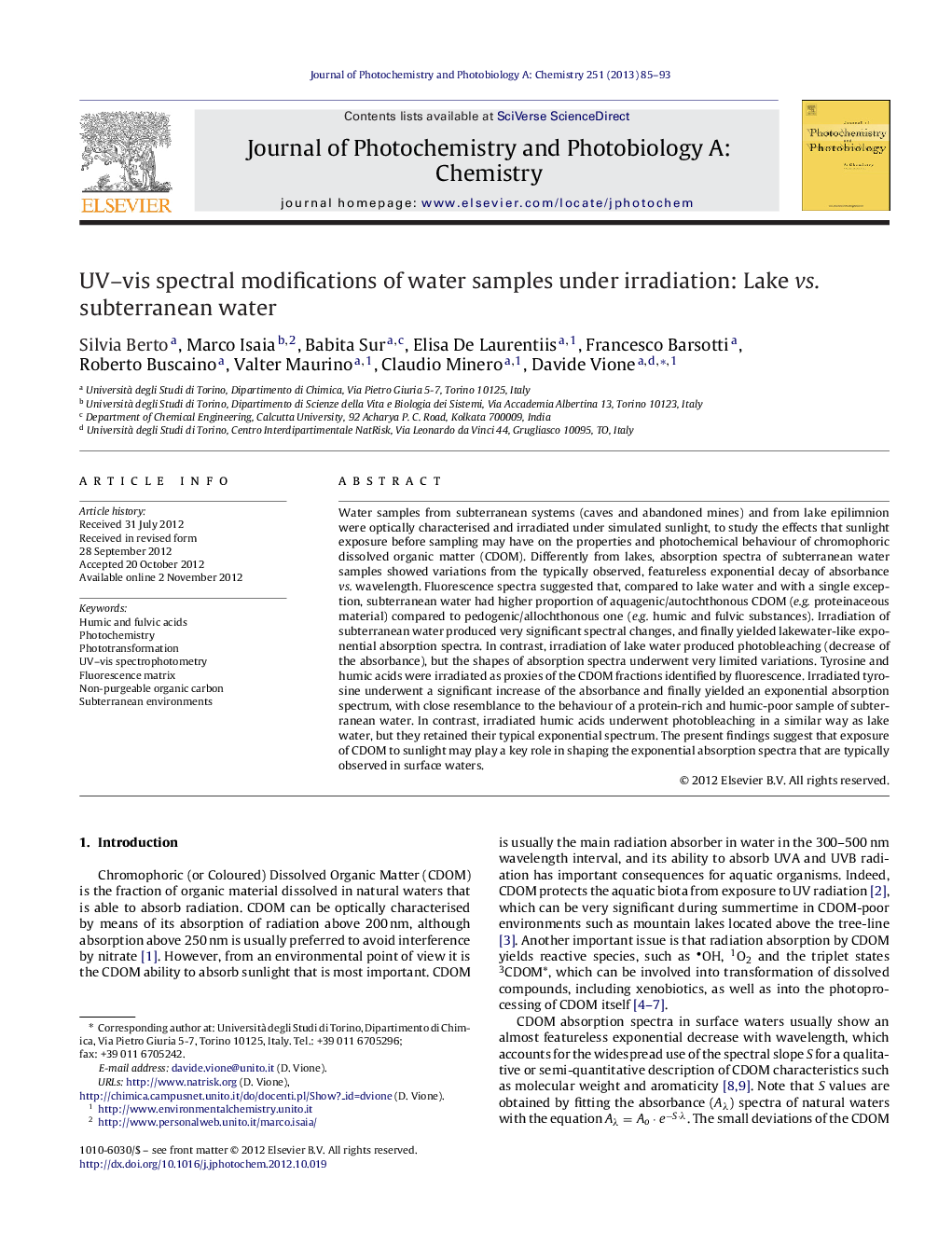| کد مقاله | کد نشریه | سال انتشار | مقاله انگلیسی | نسخه تمام متن |
|---|---|---|---|---|
| 26159 | 43937 | 2013 | 9 صفحه PDF | دانلود رایگان |

Water samples from subterranean systems (caves and abandoned mines) and from lake epilimnion were optically characterised and irradiated under simulated sunlight, to study the effects that sunlight exposure before sampling may have on the properties and photochemical behaviour of chromophoric dissolved organic matter (CDOM). Differently from lakes, absorption spectra of subterranean water samples showed variations from the typically observed, featureless exponential decay of absorbance vs. wavelength. Fluorescence spectra suggested that, compared to lake water and with a single exception, subterranean water had higher proportion of aquagenic/autochthonous CDOM (e.g. proteinaceous material) compared to pedogenic/allochthonous one (e.g. humic and fulvic substances). Irradiation of subterranean water produced very significant spectral changes, and finally yielded lakewater-like exponential absorption spectra. In contrast, irradiation of lake water produced photobleaching (decrease of the absorbance), but the shapes of absorption spectra underwent very limited variations. Tyrosine and humic acids were irradiated as proxies of the CDOM fractions identified by fluorescence. Irradiated tyrosine underwent a significant increase of the absorbance and finally yielded an exponential absorption spectrum, with close resemblance to the behaviour of a protein-rich and humic-poor sample of subterranean water. In contrast, irradiated humic acids underwent photobleaching in a similar way as lake water, but they retained their typical exponential spectrum. The present findings suggest that exposure of CDOM to sunlight may play a key role in shaping the exponential absorption spectra that are typically observed in surface waters.
Figure optionsDownload as PowerPoint slideHighlights
► Subterranean water samples were quite different from lake water ones.
► Aquagenic CDOM was more common in subterranean than in lake water.
► Subterranean water often had non-exponential absorption spectra.
► Irradiation modified spectra of subterranean water, giving an exponential trend.
► Exposure of CDOM to sunlight would control the shape of its absorption spectra.
Journal: Journal of Photochemistry and Photobiology A: Chemistry - Volume 251, 1 January 2013, Pages 85–93